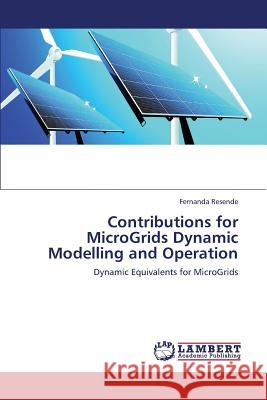Contributions for MicroGrids Dynamic Modelling and Operation » książka
Contributions for MicroGrids Dynamic Modelling and Operation
ISBN-13: 9783659382673 / Angielski / Miękka / 2013 / 344 str.
Large deployment of Microgrids within the framework of the Multi-Microgrid concept will lead with very large systems comprising hundreds or even thousands of these active cells formed at the low voltage levels and connected to the medium voltage network. Operating this system within the expected reliability levels requires performing transient and dynamic stability studies. Thus, Multi-Microgrid islanding and load following are key studies to be performed within the framework of autonomous operation mode. Using detailed mathematical models able to accurately represent the Microgrid dynamics requires dealing with very high dimension systems. Thus, this book aims deriving dynamic equivalents for Microgrids to reduce the whole system complexity to a computational feasible size and, at the same time, speed up numerical simulations with limited technical resources. Since these systems own features do not recommend classical techniques, dynamic equivalents for Microgrids are built upon the nonlinear detailed models using system identification based approaches for a model defined on the basis of physical insights and also exploiting Artificial Neural Networks.
Large deployment of Microgrids within the framework of the Multi-Microgrid concept will lead with very large systems comprising hundreds or even thousands of these active cells formed at the low voltage levels and connected to the medium voltage network. Operating this system within the expected reliability levels requires performing transient and dynamic stability studies. Thus, Multi-Microgrid islanding and load following are key studies to be performed within the framework of autonomous operation mode. Using detailed mathematical models able to accurately represent the Microgrid dynamics requires dealing with very high dimension systems. Thus, this book aims deriving dynamic equivalents for Microgrids to reduce the whole system complexity to a computational feasible size and, at the same time, speed up numerical simulations with limited technical resources. Since these systems own features do not recommend classical techniques, dynamic equivalents for Microgrids are built upon the nonlinear detailed models using system identification based approaches for a model defined on the basis of physical insights and also exploiting Artificial Neural Networks.











